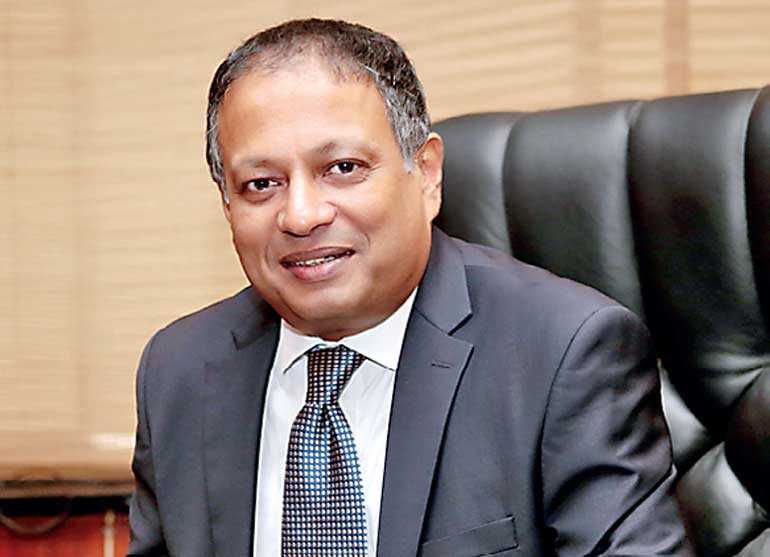Sunday Jan 11, 2026
Sunday Jan 11, 2026
Tuesday, 18 June 2019 00:10 - - {{hitsCtrl.values.hits}}

By Nisthar Cassim
Sri Lanka Ports Authority (SLPA) yesterday justified the new deal for the crucial East Container Terminal (ECT) was the best fit given the State-owned entity’s need to remain viable and to sustain Colombo’s hub status in South Asia.
The Government recently decided to take a bilateral route involving Japan and India to operationalise the ECT which has been languishing without the desired progress after the SLPA invested $ 100 million on it. Earlier the Government called for Expression of Interests from the private sector with a condition bidding consortia should include an Indian company among other criteria.
Chairman Kavan Ratnayaka clarified yesterday that a SLPA-owned and controlled ECT with a Japan-India-Sri Lanka joint venture Terminal Operating Company (TOC) serves the best interest of the State entity as well as the overall Colombo port, development partners and the national interest. The SLPA will own 51% stake in the TOC and the balance 49% by Japan and India jointly.
The deal also includes a 40-year Japanese loan which carries one of the best loan terms Sri Lanka has obtained.
He said that SLPA-managed Jaya Container Terminals (JCT 1 to 4) are running out of capacity as well as require modernisation hence a greater stake in ECT was critical. “This agreement optimises revenue and enables operationalisation of ECT with least impact on SLPA,” Ratnayaka added.
Colombo port’s current capacity with JCT, South Asia Gateway Terminals (SAGT) and Colombo International Container Terminals (CICT) is 7.5 million Twenty-foot Equivalent Units (TEUs) and last year volumes handled amounted to 7 million TEUs, up by 13.5% from 2017. 80% of the volume are transhipment.
SLPA’s ownership stake in SAGT and CICT terminal operators is 15% each.
Currently, Colombo Port is ranked 11th in connectivity (Drewery, 2018) and 22nd among global ports (Alphaliner, 2018) and is one of the fastest growing in the world.
As per the National Port Master Plan completed early this year by NIRAS mtbs and funded by the Asian Development Bank and Japan Fund for Poverty Reduction, the base case demand for transhipment via Colombo port is forecast to be 5.8 million TEUs by 2025 and to 6.4 million TEUs by 2030 and 12.6 million TEUs by 2050. The high case transhipment demand forecast is estimated at 7.3 million TEUs by 2025 and 8.5 million TEUs by 2030 and to 21 million TEUS by 2050.
The base case demand for domestic containers (import-export) is 2.1 million TEUs by 2025, 2.5 million TEUs by 2030 and 3.2 million TEUs by 2050; the high case scenario is 2.2 million TEUs by 2025, 2.7 million TEUS by 2030 and 4 million TEUS by 2050.
In that context, Ratnayaka believes the envisaged new partnership will help the Port of Colombo to continue growth and further improve its position as a competitive hub in South Asia. He said industry associations such as CASA and SLAVO have welcomed the move.
ECT phase will add 3 million TEUs capacity followed by an equal number in the second phase. Estimated cost for the operation of the entire ECT is approximately $ 500 million which would be funded by the proposed Japanese loan.
Ratnayaka said that if everything goes as planned, the ECT will be properly operational within 12 to 18 months.
Additionally, SLPA will also develop JCT 5 with an investment of $ 50 million and modernise JCT 3 and 4 with around $ 60 million.
SLPA’s master plans include development of West Container Terminal and a North Container Terminal in the Colombo port.